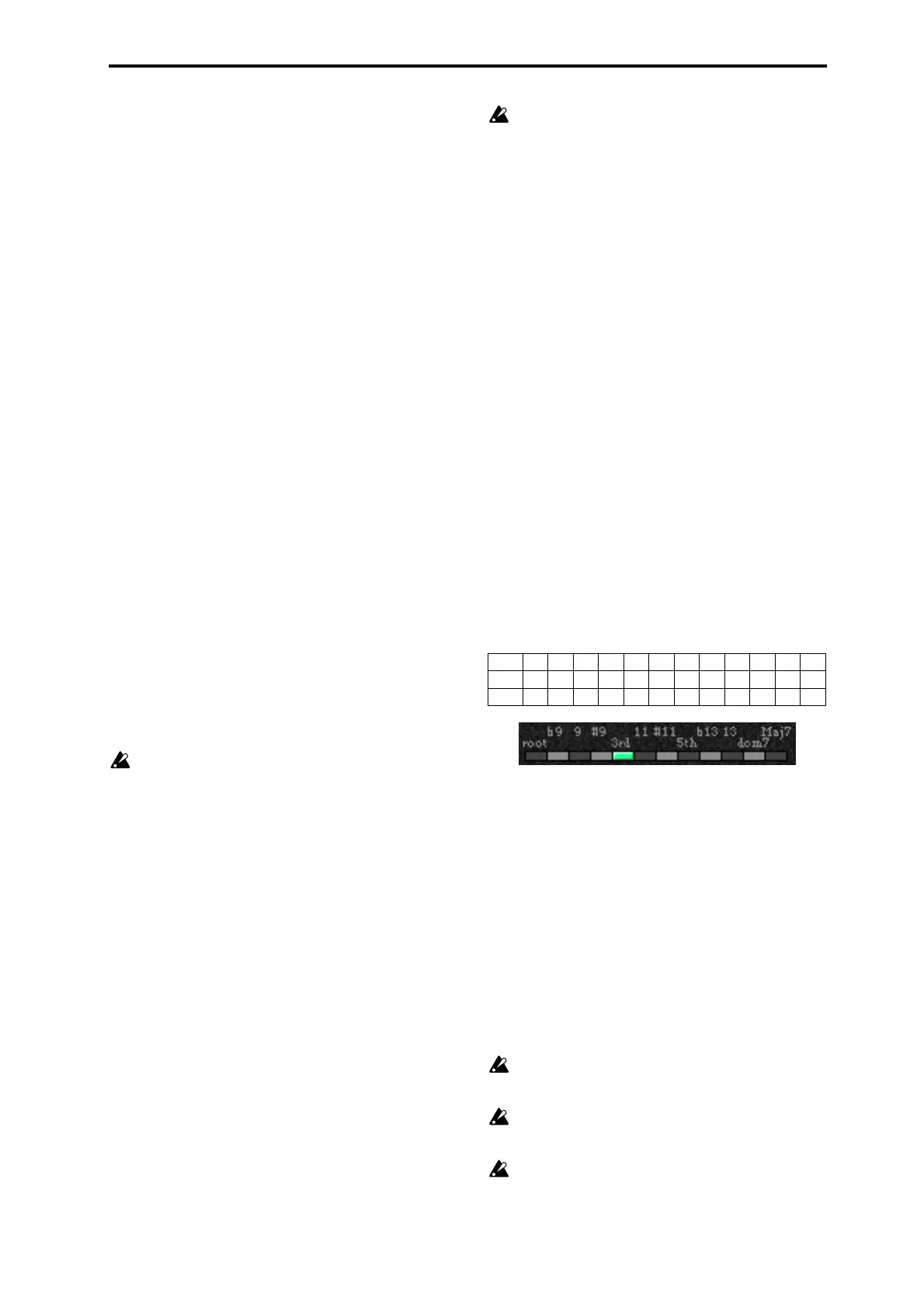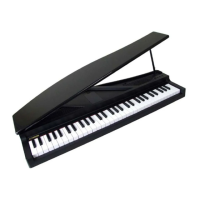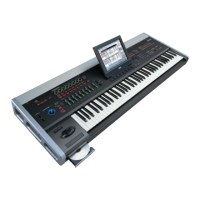Note Series Group Parameters
533
settings can also be used creatively to force a riff to cycle
around inside a certain range.
Voicing [0…8]
Selects one of several options for “spreading out” the input
notes before creating the Note Series. This can be used to
widen the voicing, create guitar-like voicings, or produce
interesting variations.
0: Closed
The Note Series is created with no further modification from
this setting.
1: Open 1A…8: Open4B
The Note Series has certain notes shifted up by an octave as
it is created, then may be re-ordered according to the setting
of “Input Sort” (☞p.532). Can be used to create different
types of wider voiced chords for simulating guitar or string
section voicings.
Filter Dupes [0…2]
Allows duplicate notes in the Note Series to be removed in
several different ways.
0: Off
The Note Series is created with no further modification from
this setting.
1: Adjacent
As the Note Series is being created, notes that are the same
as the immediately preceding note are discarded.
2: All
After the Note Series has been created, any notes that are
duplicates of any others are removed.
Not available if “GE Type” (☞p.529) = 1: Generated-
Gated.
Filter Fixed [0, 1]
When Filter Steps is used (described below), allows the
resulting tonality of the Note Series to be “Fixed” in relation
to the key of C. For example, assume that “Note Type”
(☞p.531) is set to 3: Chromatic and “Chord Shift” is 0: Off,
so that the Note Series is essentially a chromatic scale. If you
play a single C (and “Inversion” is set to 0 ☞p.532), you will
get a chromatic scale starting with C. If you then set up Filter
Steps so that you are filtering steps {1, 3, 6, 8, 10} you would
have a C Major diatonic scale. With “Filter Fixed” set to
0: Off, if you then play a D on the keyboard, the whole scale
will shift to become a D Major diatonic scale. With “Filter
Fixed” set to 1: On, the scale stays fixed to the key of C, but
you are starting on the D; essentially, you have a D minor
scale. You will be playing different modal scales starting
with different pitches. Note that this is always related to the
key of C; so if you want to put the resulting filtered, fixed
Note Series into another key, you can use the Transpose
KARMA Module parameter to do so. For more information,
please see “Transpose” on page 84. For example, if you set
the transpose to +4, you would still play notes in the key of
C, but the resulting generated notes would be in the key of
E. In the above example, playing a C would result in a E
diatonic scale, playing a D results in an F# minor scale (F#
Dorian mode) and so on.
Not available if “GE Type” = 1: Generated-Gated. For
more information, please see “GE Type” on page 529.
Filter Template [0…77]
Allows the entire Filter Steps grid (☞ About Filter Steps) to
be changed to one of 78 different settings. Template 0 is all
steps off (no steps filtered), while Template 77 is all steps on
except the root (only the root is allowed in the Note Series).
As the Templates proceed from 0 to 78, more and more steps
are filtered out, in different combinations.
Filter Temp + Restore [–1…77]
Operates the same as “Filter Template” (above), with the
difference that when the GE RTP is set to the minimum
value specified by the GE RTP page range parameters (see
“MIN (GE Real-Time Parameter Minimum Value)” on
page 90), the internal setting of the GE for the Filter Steps
grid will be restored. In other words, you can have a certain
Filter Steps setting already set up on the grid. Using “Filter
Temp + Restore” as a GE RTP, you specify a range where the
Min value restores the internal settings, and the rest of the
range selects Templates, replacing the internal settings. So if
the “Min Value” was 5 and the “Max Value” was 10,
choosing 5 would restore the internal settings, and 6
through 10 would select the corresponding Filter Steps
Template. You can use this to keep the internal settings of
the GE, while still allowing a wide variety of Filter
Templates to be substituted. In this case, the available range
is –1 – 77. You can assign the full range of all 77 Templates,
with indicating “Restore,” or only a portion of the range,
and still have the ability to restore the original internal
settings.
About Filter Steps
A 12 step grid corresponds to the scale tones with regard to
a current “key,” which is determined by Chord Analysis of
the input source material. For example, if the key is
determined to be C, then the steps 1 through 12 correspond
to C, C#, D to B; if the key is determined to be “E,” then
steps 1 through 12 correspond to E, F, F# to D#. After the
Note Series is created, notes belonging to the chosen steps
are removed, thus “filtering” them out. For example, if {C, E,
G, B} was the input material, CMaj7 would be the analyzed
chord; if step #4 “3rd” was selected on the grid (as shown in
the above diagram), all occurrences of E would be removed
from the Note Series. Useful for creating complex grooves
where several modules are all supplied with the same
source material, where for example you might not want the
bass line to play the 3rd even if it is supplied from the
keyboard, might want to remove all chance of 7ths from a
comping guitar part, etc.
Selecting all steps to be filtered will result in a single
note in the Note Series, determined by the settings of
other parameters such as “Input Sort,” “Inversion,” etc.
To “fix” the resulting filtered collection of notes with
regards to a specific key, use “Filter Fixed” (described
above).
Not available if “GE Type” (☞p.529) = 1: Generated-
Gated.
0: Closed 3: Open2A 6: Open3B
1: Open1A 4: Open2B 7: Open4A
2: Open1B 5: Open3A 8: Open4B
0: Off 1: Adjacent 2: All
0: Off 1: On
Step #1 #2 #3 #4 #5 #6 #7 #8 #9
#10 #11 #12
Key: C
CC#DD#EFF#GG#AA#B
Key: E
EFF#GG#AA#B CC# D D#
